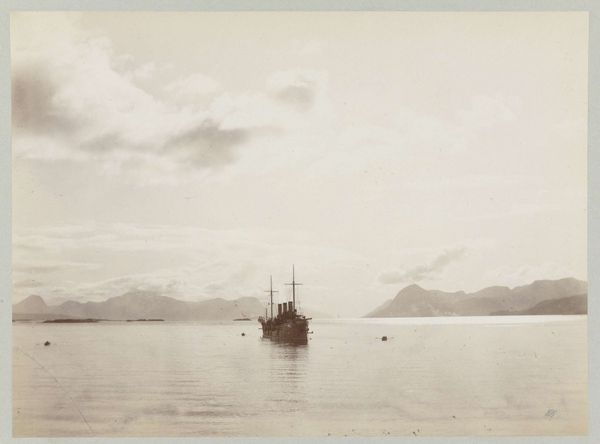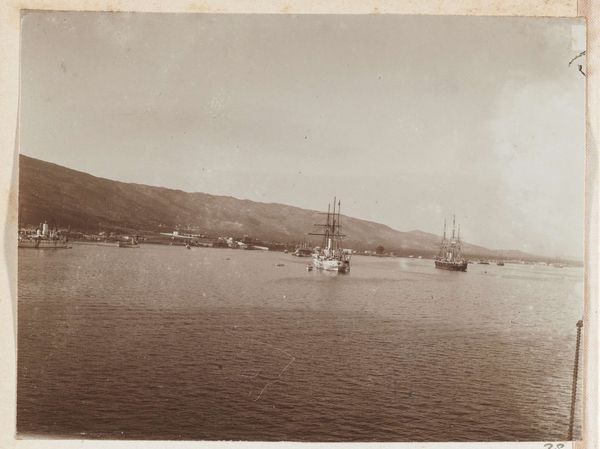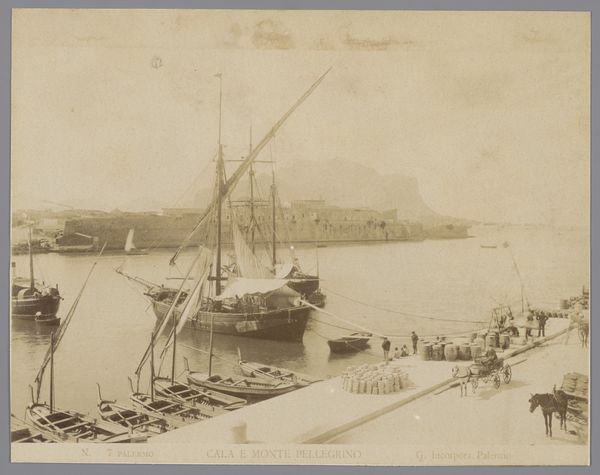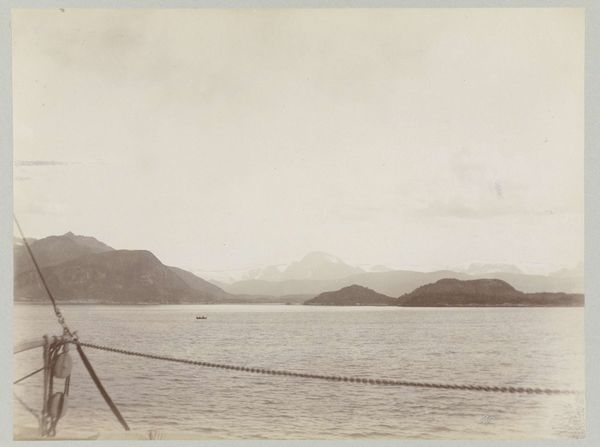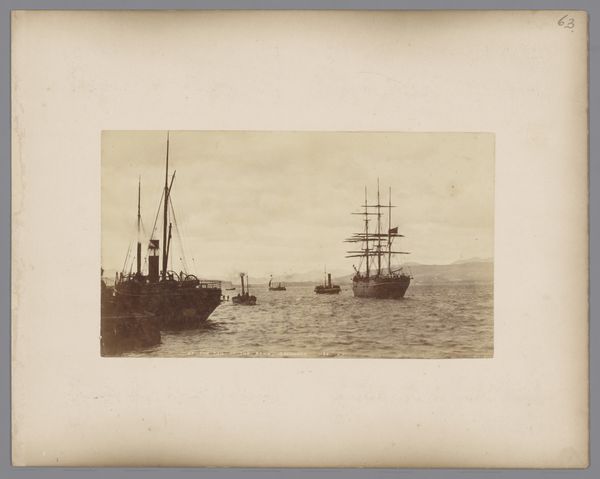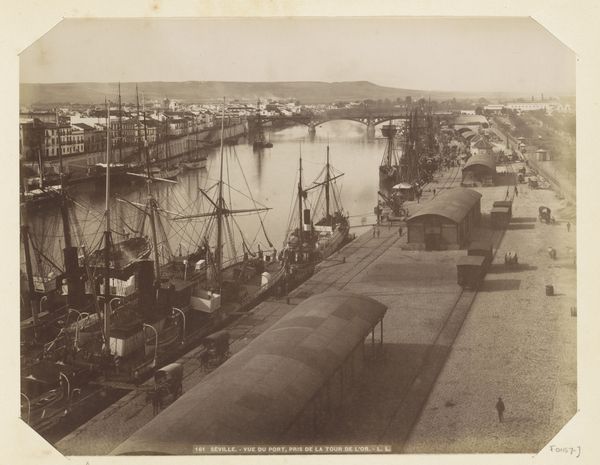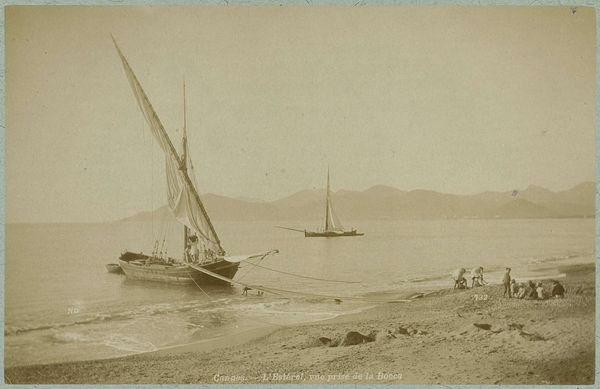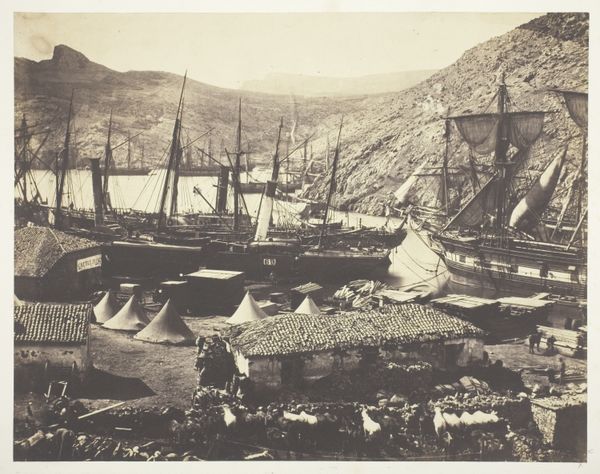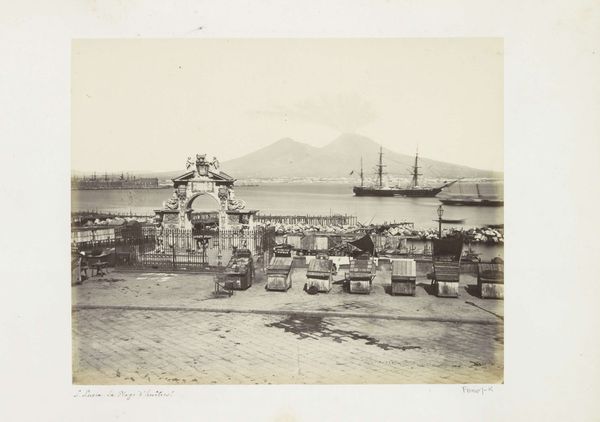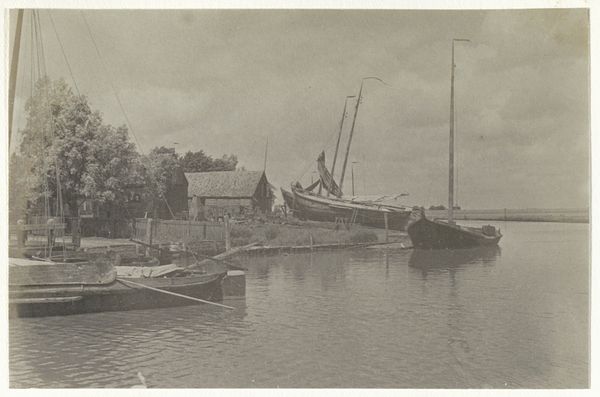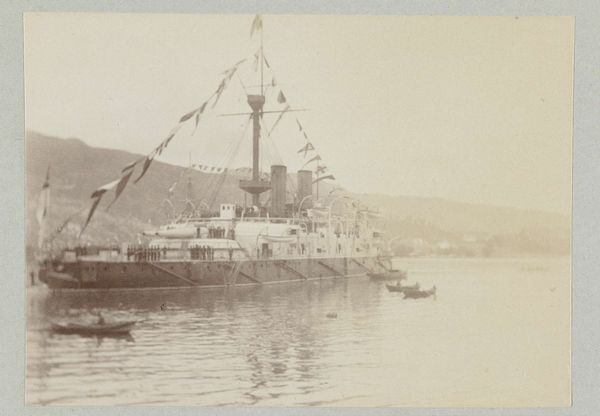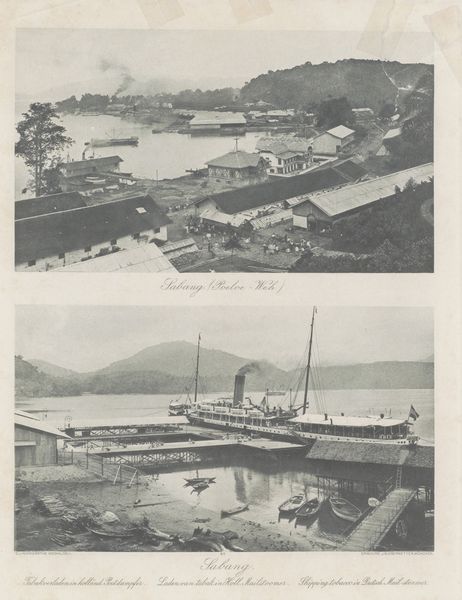
Dimensions: 12.5 × 19.9 cm (image/paper)
Copyright: Public Domain
Editor: We’re looking at “Portmadoc Harbour from Borth,” a gelatin silver print by Francis Bedford, created sometime between 1860 and 1894. It has this serene, almost dreamlike quality to it, despite being a fairly straightforward landscape. What do you see in this piece, especially given its historical context? Curator: Well, what strikes me immediately is its documentarian quality blended with an aesthetic ambition, very common in photography of this era. The Industrial Revolution was rapidly transforming landscapes, and the harbor scene represents both economic activity and the romantic ideal of nature. Consider the role photography played in shaping public perception of these changes. Editor: How so? Curator: Photography made it possible to witness faraway places and societal progress. But it also selectively framed those images. How do you think the composition, with its careful arrangement of ships and docks, influences our understanding of Portmadoc's development? Editor: It feels…controlled. Like progress is orderly, manageable, almost picturesque. Curator: Exactly! And remember, the British Empire was at its height during this period. This photograph, while seemingly benign, subtly promotes an image of industriousness, order, and the taming of nature for economic gain. This image subtly showcases imperial power. Don’t you think? Editor: I do. I hadn't considered the connection to British imperialism so directly. It’s fascinating how even landscape photography can be seen as politically charged. Curator: It makes me wonder how someone at the time would react versus a modern-day viewer. The photograph creates that narrative. Editor: Absolutely. I'll never look at another landscape photograph the same way. Thank you!
Comments
No comments
Be the first to comment and join the conversation on the ultimate creative platform.
